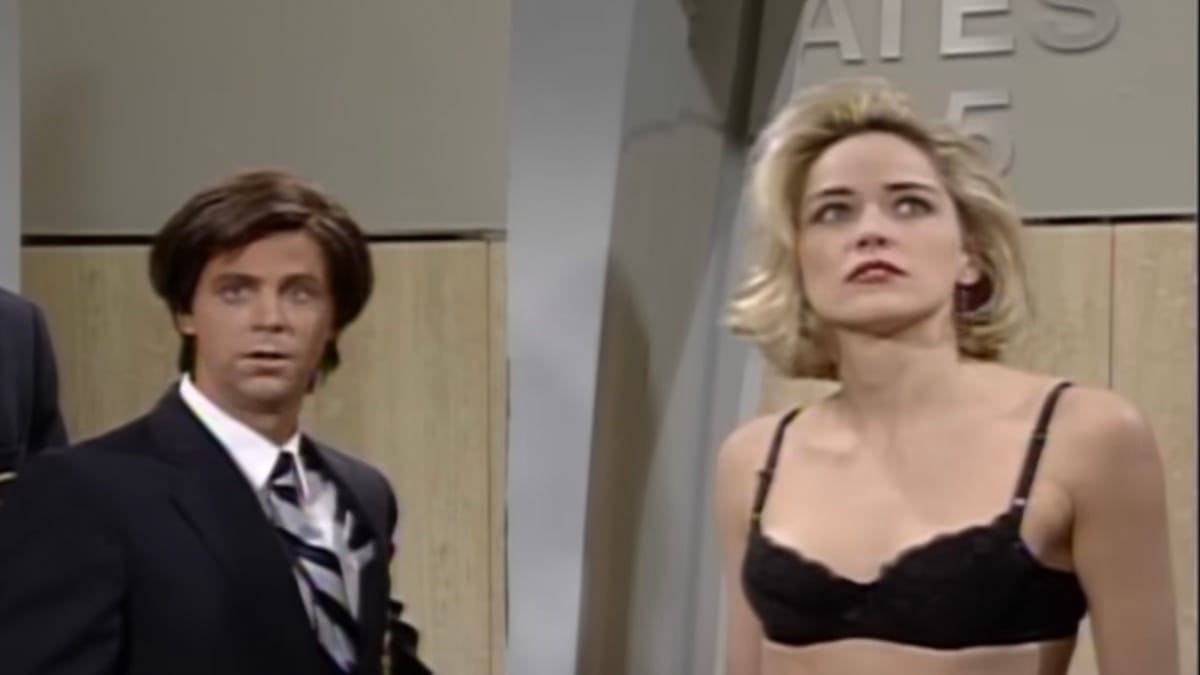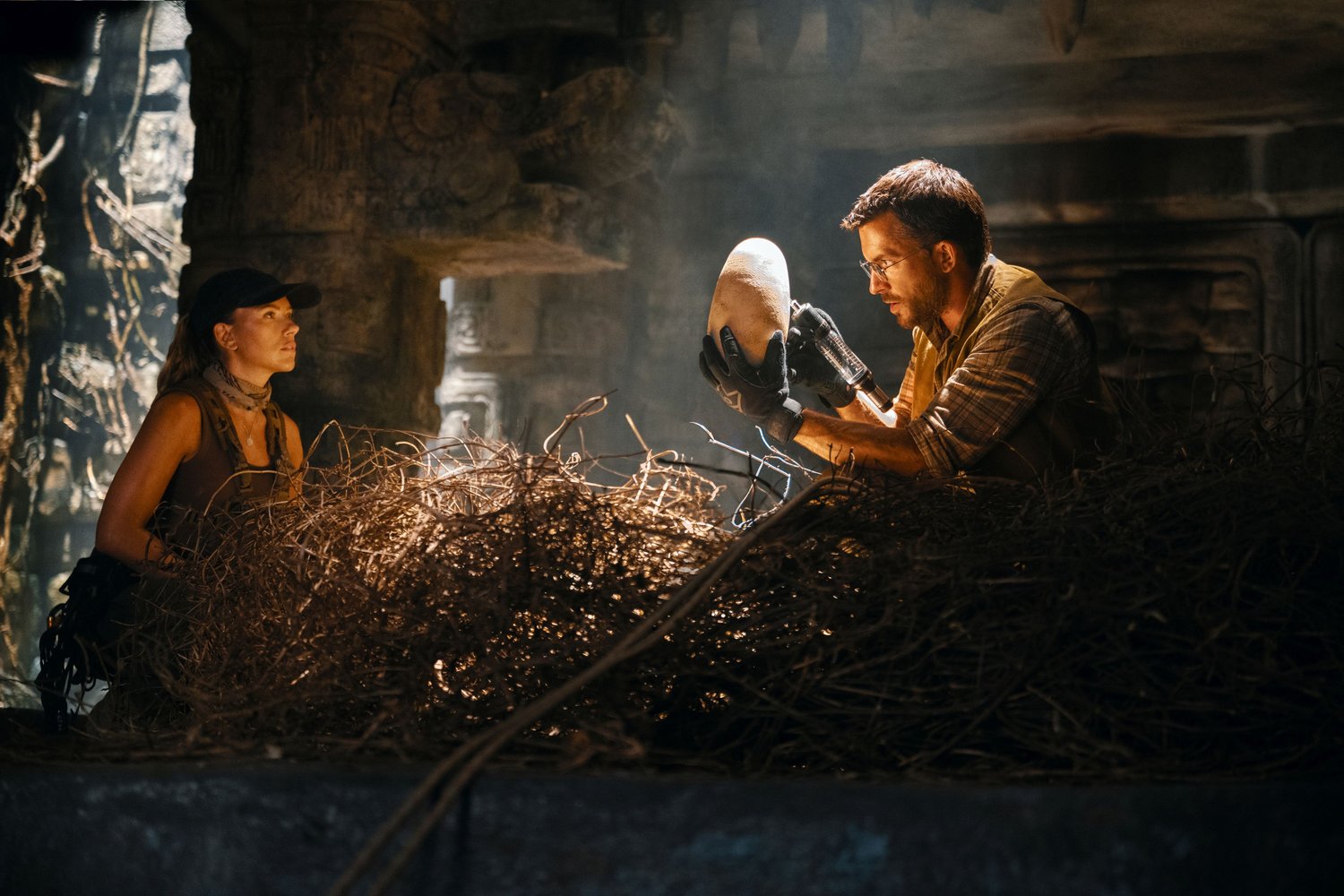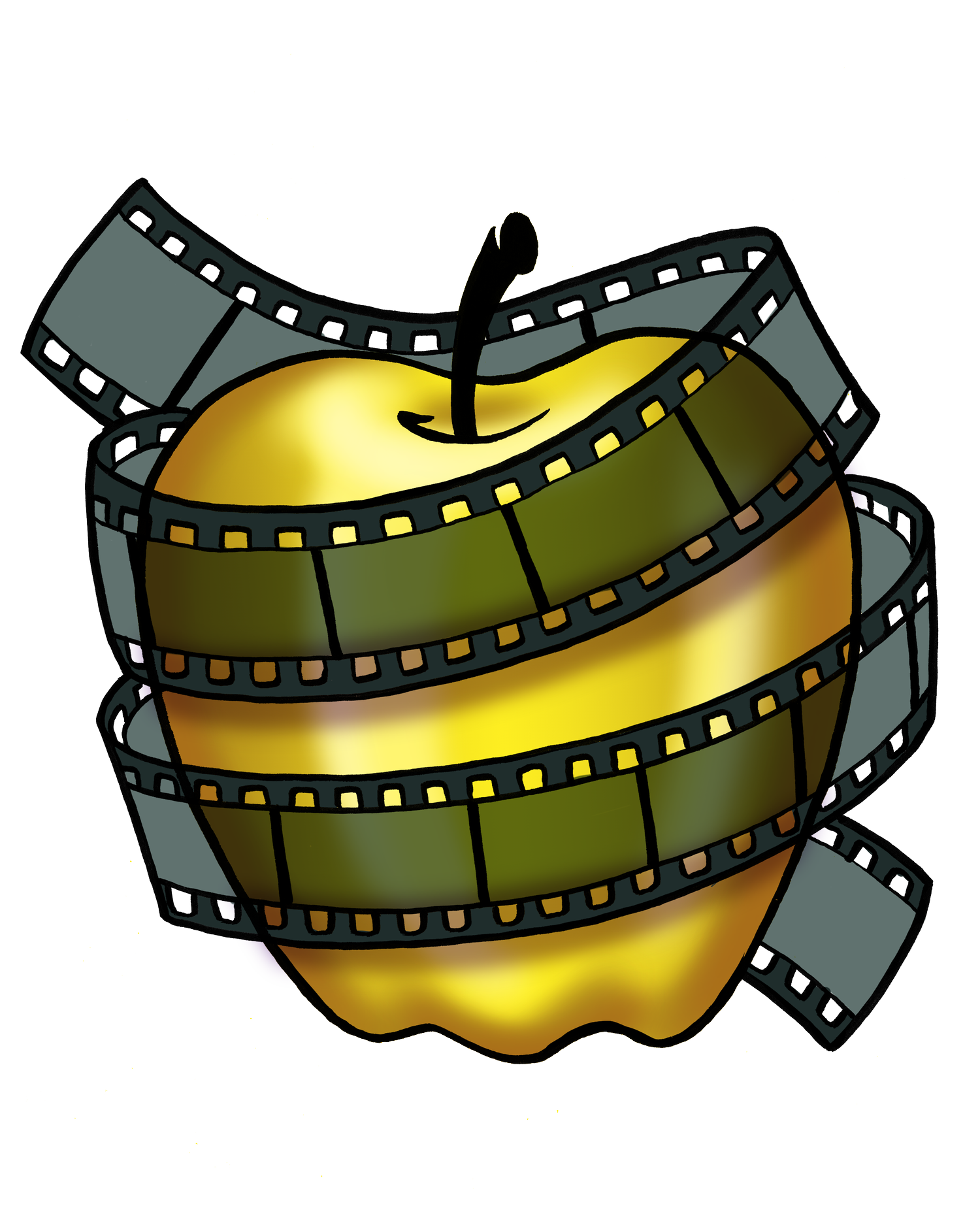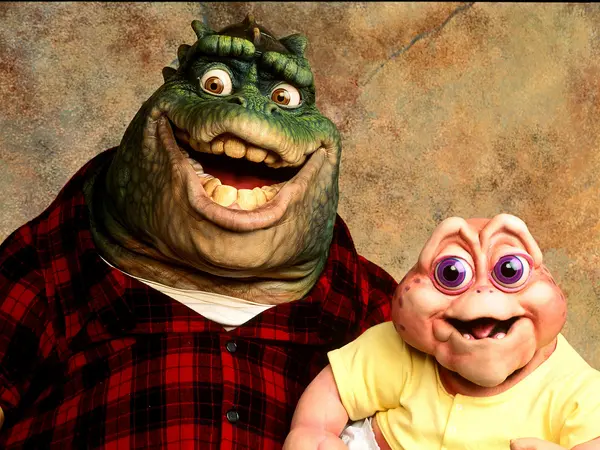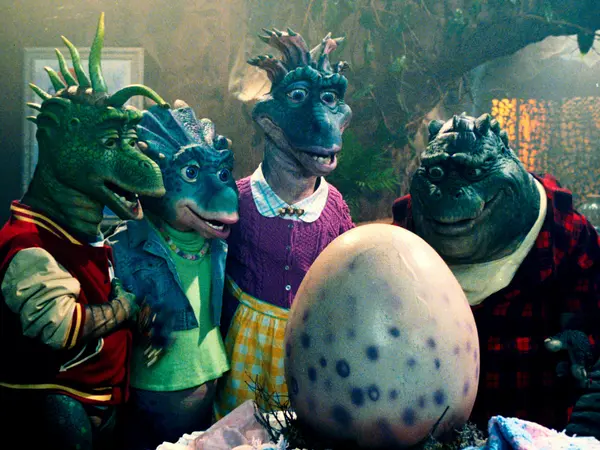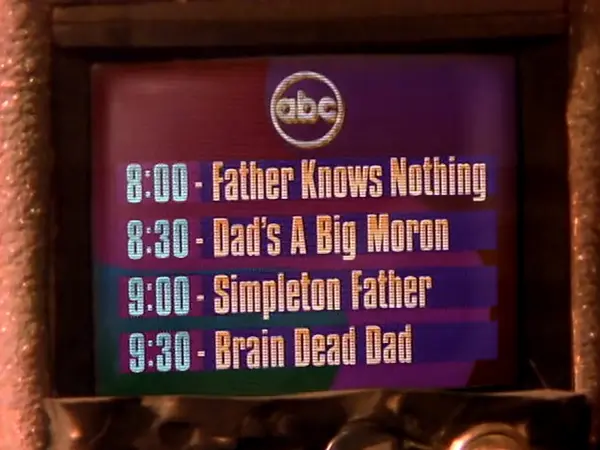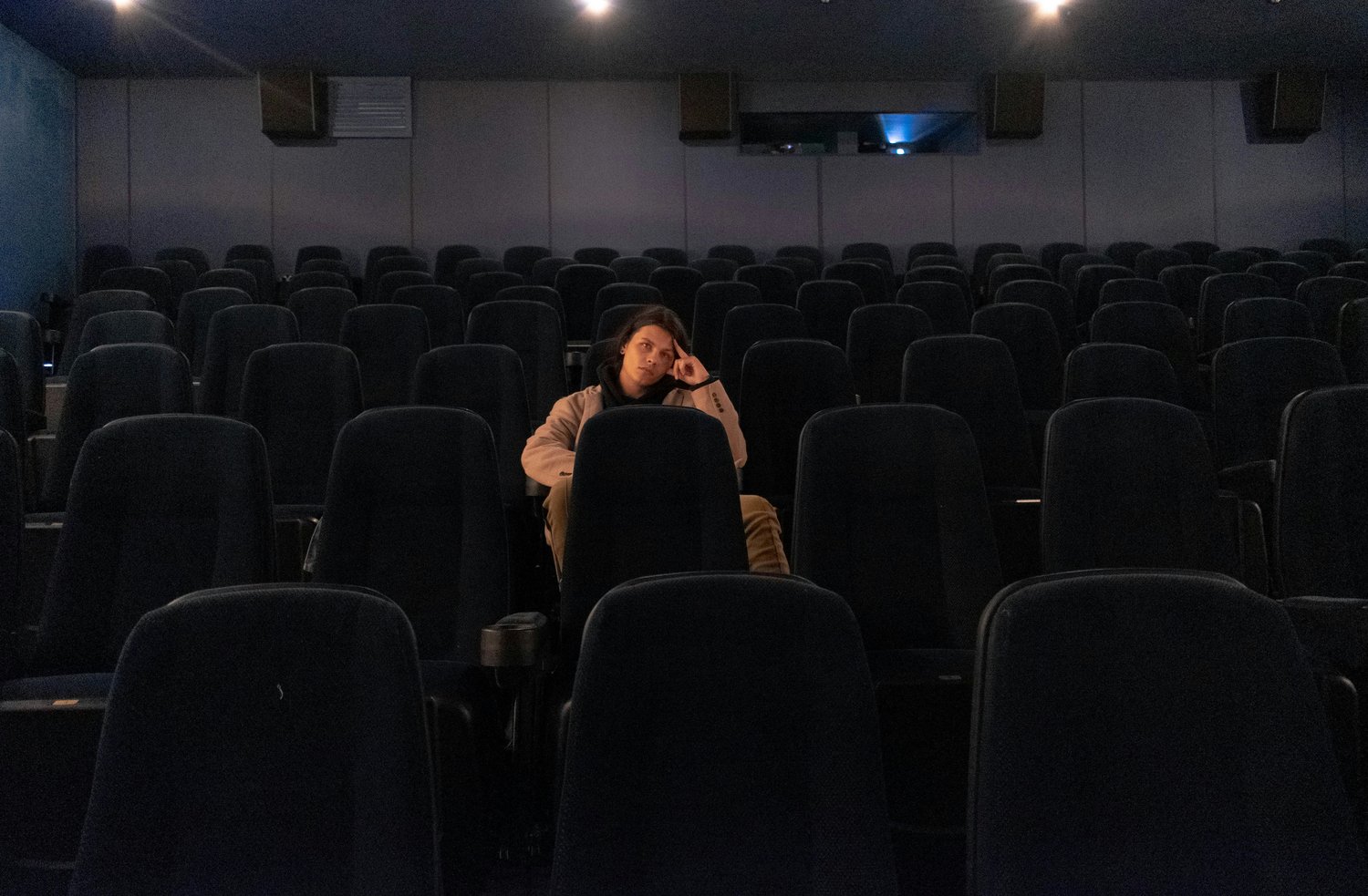Here are 12 SNL sketches they wouldn’t do today, thanks to changing standards of what’s funny. As the show marks its 50th anniversary, we look back on things that were funny then but might not fly now.
Some SNL sketches and characters — like the Dana’s Church Lady, above — hold up incredibly well. In fact, SNL brought her back this past season.
But not every Saturday Night Live sketch stands the test of time because what the general public considers OK is always changing. And evolving technology — people no longer have to send letters or call NBC, they can just gripe on X — can create a very fast, very public sense that objections to a given joke or setup are snowballing, which makes everyone involved in the show more hesitant to run the risk of doing something potentially offensive to someone, somewhere.
Let’s take a dip into the past and remember some SNL sketches that some would prefer to be forgotten.
Pat

Perhaps the most infamous of SNL characters is Pat. The “It’s Pat” SNL sketches were all built around a single joke: Nobody could tell if Pat was a man or a woman. They’d poke and prod around, trying to find the answer, but they never would.
You can probably deduce why Julia Sweeney’s Pat character would be missing from modern SNL sketches.
Remarkably, there was a Pat movie, probably the worst movie ever produced based on an SNL character, which is really saying something.
Uncle Roy

Buck Henry was primarily known as a great comedy writer whose work included The Graduate and Get Smart. He was also a staple of the early seasons of Saturday Night Live, hosting a total of 10 times between 1976 and 1980.
He also had his own recurring characters, including three appearances as Uncle Roy — a predatory babysitter. The sketches are, obviously, very uncomfortable.
Anne Beatts was one of the writers on the Uncle Roy sketches. A veteran of National Lampoon, she was famed for her brazenness, a necessity to be a female comedy writer back in the 1970s.
Ching Chang

Dana Carvey had some incredible SNL sketches and countless great recurring characters: Garth. Church Lady.
Then, there’s Ching Chang. We don’t even like writing the character’s name out.
There is no malice in Dana Carvey’s Ching Chang character, but he’s hard to watch now. There’s a reason they didn’t make the Best of Dana Carvey collection. Let’s just focus on all the good Carvey characters, like Church Lady (above).
Lyle, the Effeminate Heterosexual

Hey, Dana Carvey returns! This one is less dicey, but does feel like something that would probably be avoided now, given the potential for it to stir controversy. Like many Saturday Night Live characters, this is a one-note premise, and it is right there in the character’s name.
Carvey plays Lyle, and basically everybody assumes he’s gay because of his mannerisms. These could have been really iffy, but the “game” of the scenes is that everybody who assumes he’s gay is totally fine with it, including his wife.
Much of the comedy comes from Lyle’s surprise and shock that anyone could think he’s gay.
John Belushi’s Samurai

A white guy could be a samurai. Tom Cruise did it in a movie! However, John Belushi was not simply playing a samurai who was white in all his various sketches about a samurai who runs whatever business. No, in the samurai SNL sketches, Belushi is playing a Japanese samurai.
That means, in addition to his traditional garb and hairstyle associated with samurai, Belushi is doing gibberish Japanese. He appeared in many sketches, mostly involving Buck Henry. Henry was a fan of the original sketch and asked to do a samurai sketch every time he hosted.
That’s even though one time Belushi hit Henry with his sword and cut his head open.
Robert Goulet

Will Ferrell played Goulet, the famed crooner, a few times. He’s a very Ferrell style person to play. There was no inherent issue with Ferrell’s Goulet impression. No, it is one particular time that Ferrell played Goulet that would not fly today.
The joke in one of the Goulet SNL sketches was that he was crooning famed rap songs such as “Thong Song.” A couple of the songs in the sketch, though, contained the N-word. And Ferrell said it. Live from New York.
Famously, Chevy Chase and Richard Pryor did a sketch that involved the use of that word, but it was 1975, Pryor was central to the sketch, and it was actively about racial prejudice.
Canteen Boy

We will stump for the infamous iteration of the Canteen Boy sketches not being problematic, if only being fitfully funny and a smidge lazy. Adam Sandler played Canteen Boy several times, but only once was did it spark offense — so much so that it was referenced in Alec Baldwin’s monologue the next time he hosted.
Canteen Boy is a classic Sandler character in that he is almost an anti-character. He’s just an odd assistant scoutmaster who has a canteen. Baldwin, in one sketch, played the scoutmaster who, well, makes sexual advances on Canteen Boy. Canteen Boy knows what is going on, and he flees and summons animals to attack Baldwin’s scoutmaster.
Still, the idea of a sexually aggressive scoutmaster upset people. Modern SNL sketches tend not to make jokes about this kind of thing.
Jazz Man

Billy Crystal was only on Saturday Night Live for one season, the infamous 1984-85 season when a show that was on the ropes was trying to right the ship. That included bringing in people like Crystal who were already famous.
In fact, Crystal had previously appeared on Saturday Night Live, and the first time he did he brought his Jazz Man character into the mix.
The Jazz Man is one of the wilder recurring characters in comedy. Crystal has brought it out time and time again, including into the new millennium. It’s one of multiple characters Crystal plays in blackface. At least when he plays Sammy Davis Jr. he’s doing an impression of a real person (not that it inoculates him, of course). With the Jazz Man, he’s just doing a stereotypical jazz guy. In, you know, blackface.
David Paterson

Paterson was the governor of New York for a couple years, and SNL is a New York-based show. Fred Armisen played Paterson several times on SNL. Given their respective racial makeup, that was already not ideal. However, Paterson is also legally blind, and Armisen’s impression of Paterson leaned heavily into that.
Armisen’s Paterson was a squinting, bumbling klutz. That would be questionable if Armisen was just playing a generic blind guy, but he was playing a real person who was legally blind. He turned Paterson into Mr. Magoo.
The real Paterson was bighearted enough to appear next to Armisen doing his impression one night — part of Armisen apologizing for the broad caricature.
Vinny Vedecci

Bill Hader is a fantastic impressionist, and he loves old-school archetypes. There’s a reason why he did a recurring Vincent Price sketch. One of his other recurring Saturday Night Live characters was Vinny Vedecci. Vedecci was the host of an Italian talk show, and he was boorish and brash. He also spoke largely in gibberish Italian. You know, that classic patter of Italian that isn’t actually words.
We include this one because Hader himself has said he would not do Vedecci again. An Italian woman told him that she did not like the sketch, because it sounded so much to her like a gibberish version of her father.
Hader had seen it in his head as a riff on classic comedy tropes, but this changed his perception.
Nude Beach

We end with a sketch that only occurred once, and personally we have no problem with it, but it raised huge objections at the time.
We’re talking about a beach sketch written by the indelible Conan O’Brien alongside the also great Robert Smigel. Matthew Broderick was the host when it finally aired, and Dana Carvey features prominently again. The sketch takes place at a clothes-free beach, and even the amount of skin in the sketch feels like it might not be tried today.
However, when writing the sketch, O’Brien and Smigel had a goal: “Penis” is a clinical, medical word that refers to an organ of the male body. O’Brien and Smigel set out to use it as many times as they could — more than 40 times in all.
Reportedly, well over 40,000 complaints were registered with NBC. We doubt the show would ever poke the bear this way again.
The Sharon Stone Airport Security Sketch

Last year on his Fly on the Wall podcast, Dana Carvey playfully apologized to Sharon Stone for a 1992 SNL sketch in which he played one of several airport security employees who try to get her to undress — supposedly “for security reasons.”
Besides the sexual harassment joke, Carvey played the character as Indian. Carvey joked on the podcast that “we would be literally arrested now,” for attempting to do the sketch today.
But he later clarified that he was just joking when he apologized to Stone, noting that when the sketch aired, “the whole audience went crazy, you do the sketch like six times with the read-through and the rehearsals, and she was such a sport with it. So there was no reason to apologize.”
He also noted that he’s done imitations of all nationalities and doesn’t apologize. But the modern SNL would never go for the sketch today.
Liked These Old SNL Sketches That Wouldn’t Fly Today?

You might also like this list of the 12 Best Saturday Night Live Sketches or this list of 15 Best SNL Characters.
Main image: SNL. NBC
